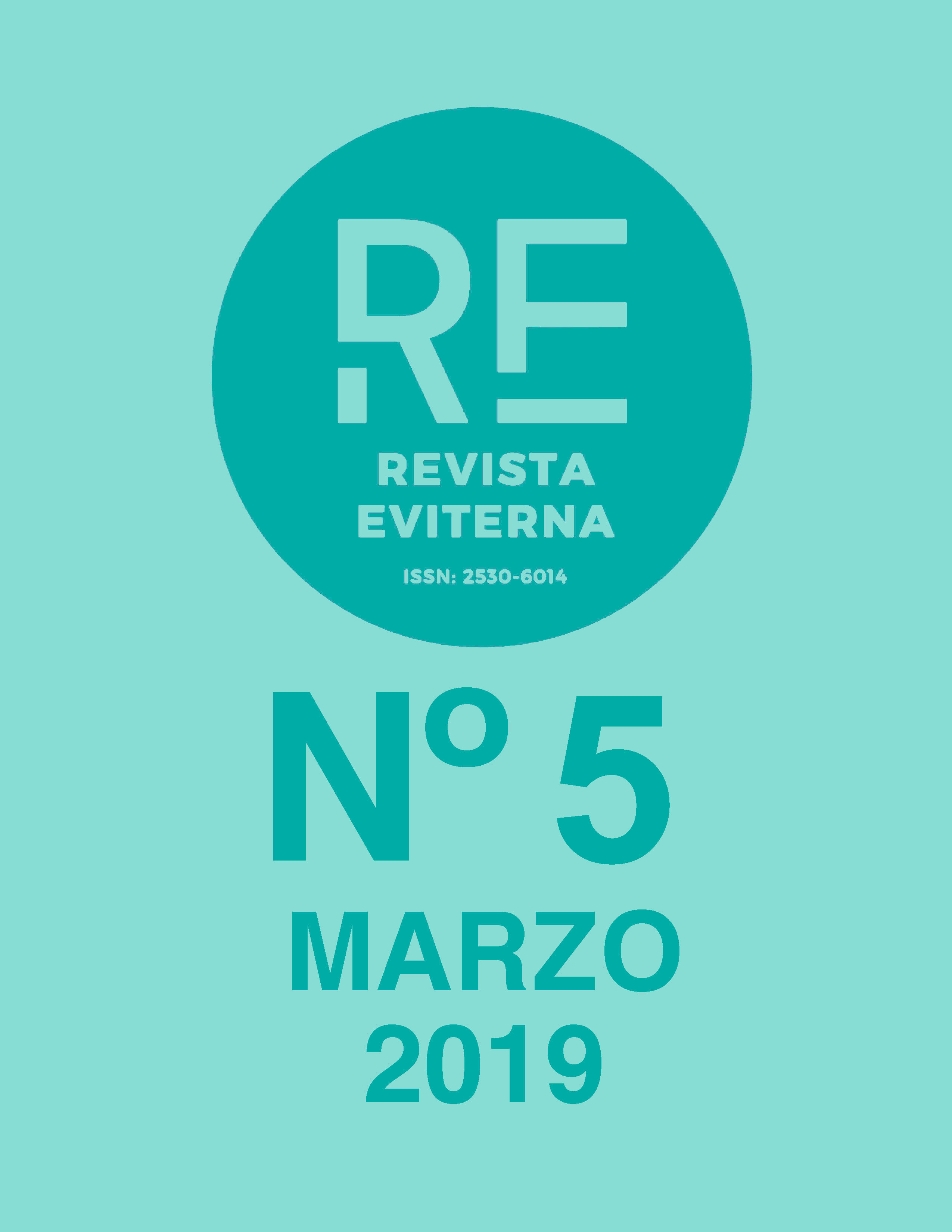Autorretrato femenino: espacios y mentes encarcelados
DOI:
https://doi.org/10.24310/Eviternare.v0i5.8088Palabras clave:
Francesca Woodman; Rebecca Horn; cuerpo; espacio; performance; fotografía; identidad; fenomenología; abyecciónResumen
Este artículo examina la obra de Francesca Woodman y Rebecca Horn, relacionando el trabajo de ambas y estableciendo conexiones entre sus creaciones y sus biografías, entre su obra y su “yo”. En sus prácticas artísticas crean entornos claustrofóbicos que evocan cárceles. Estos entornos reflejan su “yo” más interno, sus traumas y su ansiedad. A través de la simbiosis del cuerpo y el espacio se retratan a sí mismas, difuminando de esta manera los límites entre el “yo” y el mundo externo, entre la psique y el lugar habitado. Al analizar en detalle su obra y sus vidas este artículo plantea la idea de que su creación pueda interpretarse como una autobiografía dinámica y visual, como un autorretrato cinético y psicológico de estas dos artistas.
Descargas
Métricas
Publicación Facts
Perfil de revisores N/D
Información adicional autores
Indexado: {$indexList}
-
Indexado en
- Sociedad Académica/Grupo
- N/D
- Editora:
- Universidad de Málaga
Citas
BACHELARD, Gaston (1994), The Poetics of Space, Beacon Press: Boston, Massachusetts.
BRONFEN, Elisabeth (2010), ‘Visuality-Textuality: An Uncanny Encounter’, Image & Narrative, 11, pp. 7-24.
CHADWICK, Whitney (ed.) (1998), Mirror Images. Women, Surrealism, and Self-Representation,The MIT Press: Massachusetts.
CONLEY, Katherine (2013), Surrealist Ghostliness, University of Nebraska Press: Lincoln; London.
FREUD, Sigmund (1976), ‘The Uncanny’, New Literary History, 7:3, pp. 619-645.
FREUD, Sigmund (1946), Civilization and its Discontents,The International Psycho-Analytical Library: London.
GILMAN, Charlotte Perkins (1892), ‘The Yellow Wall-Paper’, New England Magazine, pp. 647-656.
JONES, Amelia (1998), Body Art/Performing the Subject, University of Minnesota Press: Minneapolis.
KENNEDY, Meegan (2012), ‘Modernist Autobiography, Hysterical Narrative, and the Unnavigable River: The Case of Freud and H.D.’, Literature and Medicine, 30:2, pp. 241-275.
KRENS, Thomas (1993), Rebecca Horn, exh. cat., Guggenheim Museum, New York.
KRISTEVA, Julia (1982), Powers of Horror. An Essay on Abjection, Columbia University Press: Chichester; New York.
LOMAS, David (2012), 'Becoming Machine: Surrealist Automatism and Some Contemporary Instances', Tate Papers, 18, p. 33, http://www.tate.org.uk/research/publications/tate-papers/18/becoming-machine-surrealist-automatism-and-some-contemporary-instances(10 October 2018).
LUX, Harm (1992), Francesca Woodman. Photographic Works, exh. cat., Shedhalle Zürich; Westfälischer Kunstverein, Münster.
MERLEAU-PONTY, Maurice (1964), The Primacy of Perception: And Other Essays on Phenomenological Psychology, the Philosophy of Art, History and Politics, Northwestern University Press: Illinois.
RICHES, Harriet (2004), ‘A Disappearing Act: Francesca Woodman’s Portrait of a Reputation,’ Oxford Art Journal, 27:1, pp. 97-113.
SCHWARTZMAN, Madeline (2011), See Yourself Sensing. Redefining Human Perception, Black Dog Publishing Limited: London.
SHOWALTER, Elaine (1993), ‘On Hysterical Narrative’, Narrative, 1:1, pp. 24-35.
SLEEMAN, A. J., KENT, S., RAWES, P., DEZEUZE, A. (2007), ‘Drawing the Line: A Round Table on Rebecca Horn’, Papers of Surrealism, 5,
http://discovery.ucl.ac.uk/45999/(10 October 2018).
ZWEITE, Armin (ed.) (2005), Rebecca Horn: Bodylandscapes. Drawings, Sculptures, Installations 1964-2004, exh. cat., Hayward Gallery Publishing: London.
Descargas
Publicado
Cómo citar
Número
Sección
Licencia
Todos los contenidos publicados en Revista Eviterna están sujetos a la licencia Creative Commons Reconocimento-NoComercia-Compartirigual 4.0 cuyo texto completo puede consultar en <http://creativecommons.org/licenses/by-nc-sa/4.0>

Se pueden copiar, usar, difundir, transmitir y exponer públicamente, siempre que:
- Se cite la autoría y la fuente original de su publicación (revista, editorial y URL de la obra).
- No se usen para fines comerciales.
- Se mencione la existencia y especificaciones de esta licencia de uso.
Los derechos de autor son de dos clases: derechos morales y derechos patrimoniales. Los derechos morales son prerrogativas perpetuas, irrenunciables, intransferibles, inalienables, inembargables e imprescriptibles.
De acuerdo con la legislación de derechos de autor, Revista Eviterna reconoce y respeta el derecho moral de los autores/as, así como la titularidad del derecho patrimonial, el cual será cedido a la Universidad de Málaga para su difusión en acceso abierto.
Los derechos patrimoniales, se refieren a los beneficios que se obtienen por el uso o divulgación de las obras. Revista Eviterna se publica en open access y queda autorizada en exclusiva para realizar u autorizar por cualquier medio el uso, distribución, divulgación, reproducción, adaptación, traducción o transformación de la obra.
Es responsabilidad de los autores/as obtener los permisos necesarios de las imágenes que están sujetas a derechos de autor.







12.png)



